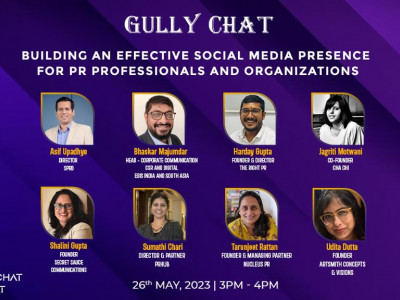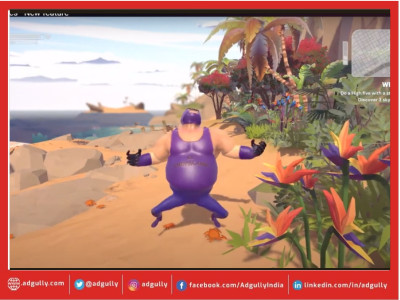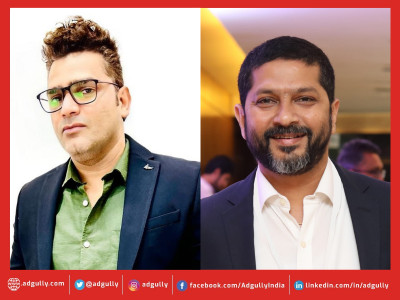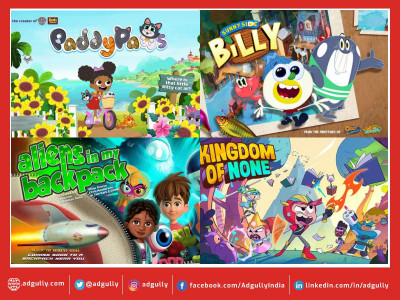What’s holding back Indian animation and VFX industry?
The animation and VFX sector grew 20 per cent in 2019, as per FICCI-EY M&E Report. Demand for domestic content (broadcast and digital) was high in 2019 and is expected to keep rising over the next few years as platforms focus on customer acquisition.
The report further states that the year 2019 witnessed over 20 per cent growth in revenues from domestic OTT players. The likes of Netflix and Amazon Prime Video are increasingly looking at markets outside the US, like India, to accelerate growth and these markets need original content, which resulted in an increased demand for VFX, post-production and animation services. In all, around 1,600 hours of high-quality original content was created for digital platforms in 2019.
Also read: #TwitterChat: Is your marketing strategy giving you the maximum ROI?
Given the growing potential as well as demand in this sector, it becomes imperative to understand the growth prospects, the skill set required, the kind of work this sector has been doing, the challenges and most importantly, find an answer to the question – ‘Is the Indian Animation industry ready to take on the international markets?’
Take any Hollywood release nowadays and chances are that one would find a few Indian names in the credit rolls, especially in the VFX section. And when it comes to animation, this field has today developed much beyond just cartoon shows for kids. But has Indian Animation come of age?
Continuing with Adgully’s flagship #TwitterChat, this time we turned the focus on ‘Is the Indian animation industry ready to compete overseas?’
Joining in the conversation were:
Devdatta Potnis, SVP - Revenue and Corporate Strategy, Cosmos Maya (@KalamTazaa)
Dipan Gajjar, Senior Creative Supervisor in Animation, ReDefine (@Dipan_G)
Cyrus Pagdiwala, Executive Producer, Corcoise Films (@CPagdiwala)
Bharath Laxmipati, Senior Vice President, Green Gold Animation Pvt Ltd (@blaxmipati)
Pravir Arora, Chief Marketing Officer, Aptech (@arora_pravir)
Robert Godinho, Managing Partner, Media Monks India (@Robbie296)
The discussions commenced with a comparison between the Indian Animation industry and the global industry.
https://twitter.com/adgully/status/1289131265539444739?s=19
Cyrus Pagdiwala noted, “Animation films and VFX for scaling up films are at a mind numbing level internationally. While Indian animators and VFX specialist are making good progress in both these fields, especially in the last 5 years, I believe we’re still chasing the West. I would like to see us lead some day in fantastical innovation and thought process, in characterisation and photo realistic animation and VFX. Currently, our VFX is too restrictive and ties a director’s vision with what is achievable.”
Giving a detailed journey of the animation industry, Pravir Arora said, “The Indian industry started as outsourcing and post-production service companies. They gradually became more proficient in the art of 3D, with a myriad of small and larger companies making up the CG ecosystem in India. In the last decade, the output quality and QTY of these studios has grown steadily. One of the main reasons for this is availability of trained manpower. This segment for us at Arena Animation & Maya Academy has been growing at a very rapid pace. As a result, many international studios are interested in either opening their own studio in India or investing in existing companies. These international studios have not just brought investments, but also added to the creative and Tech pool in India. The animation services emerging from India have continued to gain traction among international production houses; huge English speaking base, studio infra and a robust M&E industry have the foreign producers flocking towards Indian animation services. ‘Baahubali’ 1 & 2 were the game changers when Bollywood films witnessed an increased demand for big-budgeted VFX productions.”
Giving the perspective of MediaMonks, Robert Gordinho said, “MediaMonks is a digital-first creative content creator with an ‘artist-first’ philosophy with offices in over 30 countries. We are in India because we see the exceptional talent available in India to service all our clients within India and internationally.”
Devdatta Potnis added here, “As far as Indian animation goes, the evolution of the audience mindset is the major necessary factor. It is indeed just a matter of time that Indian animation gets its due as all efforts in all directions are right on track, while the macro level factors are only getting more favourable by the day. Animation series have created a conducive mindset and culture of animation consumption. It is a matter of time that the audiences take it further. Creative outputs are a function of budgets and once the market is ready, the budgets will be in.”
According to Bharath Laxmipati, “OTT platforms are increasingly looking at markets outside the US, like India, to accelerate growth and these markets need original content, which resulted in an increased demand for VFX, post-production and animation services. Demand for domestic content (broadcast and digital) was high in 2019 and is expected to keep rising over the next few years as platforms focus on customer acquisition. The year 2019 witnessed over 20 per cent growth in revenues from the domestic OTT players.”
Dipan Gajjar believed that Indian animation is certainly at par with the world. “At ReDefine, we are co-producing some good international content, where we do have an equal say in the storytelling process. Similarly, for the film VFX, we are working on acclaimed Hollywood as well as big-budgeted VFX-heavy Bollywood films. Our creative teams work directly with the directors, right from the scripting stage. This has helped us to push the quality of animation and storytelling at ReDefine further. Some of our creatives have also ‘directed’ content for our international clients. Having said that, in terms of IPs I believe that we have a number of stories that can come from India which needn’t all be mythological in nature, and I think there’s a big Indian market that hasn’t been tapped into yet.”
There are various need gaps that have to be fulfilled in the Indian animation industry for it to be able to compete with the likes of international giants like Pixar and Disney.
https://twitter.com/adgully/status/1289134842785873921?s=19
Pagdiwala remarked, “We’ve recently had ‘Arjun: The Warrior Prince’, an animation film done by Arnab Chaudhuri for Disney in India, as Disney’s Oscar nomination from India. That’s proof of the pudding that we’ve already started achieving great things.” He further said, “I also do believe that with the entry of big animation houses like Disney in India, we will show interesting progress. Learning and amalgamation of skills and artistic sensibilities are the key. We have come a long way, but we still have some distance to go. To be fair to the Indian animation and VFX teams, when a project is based in India, producers and clients squeeze budgets and timelines to unrealistic levels, thereby reducing chances of great creative.”
Gordinho said, “The artists exist and seem to be one of India’s best kept secrets. International hubs have been part of the ecosystem for a while, with big houses like MPC and The Mill present here to do work for the likes of Pixar and Disney.”
Animation takes time and clients need not only give time, but also allocate budgets to allow such products to reflect in the India market.
Gajjar explained, “The reason we are ‘considered’ not ‘up there’ is because, in terms of the scale of the original IPs, we are not at par with these studios. So, basically that would mean comparing apples and oranges. Things are looking up, though because OTT platforms are now investing big money into original content; I am sure we are not too far from making original Indian animation content which is at par with the quality standards of Disney and Pixar.”
He further said, “In terms of capability, we are already executing such a level of work in India. In fact, studios like Disney/ Dreamworks have offices in India and Pixar regularly outsources animation from India-based studios. So, we have talent and technology, all we need is investment and belief in our own original stories, which we can present to the world. In terms of what could be better, we need quality education when it comes to VFX or animation. Also, mentoring students by industry professionals at school will make a huge difference in the quality of content that students will make in the future. This is a technology-based industry and as technology upgrades, it is important that the student’s education is also upgraded.”
Laxmipati added here, “The talent exists, but quality needs investment. US spent $70 billion in 2019 on content, whereas the entire Indian M&E industry sector stands at $30 billion. We need to bridge this gap.”
To catch the complete conversation follow @adgully on Twitter. Join in for more such #TwitterChats every Friday from 3pm to 4pm.
















Share
Facebook
YouTube
Tweet
Twitter
LinkedIn